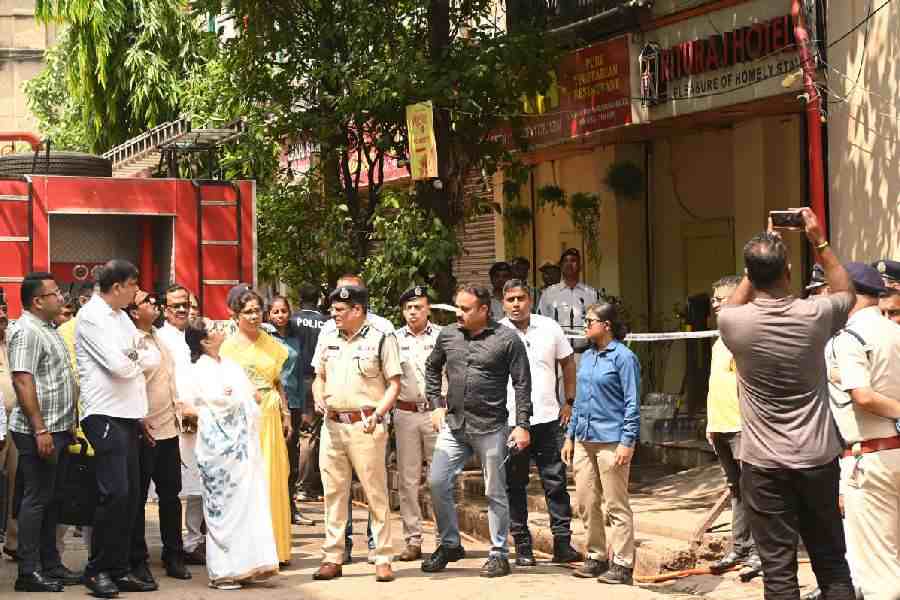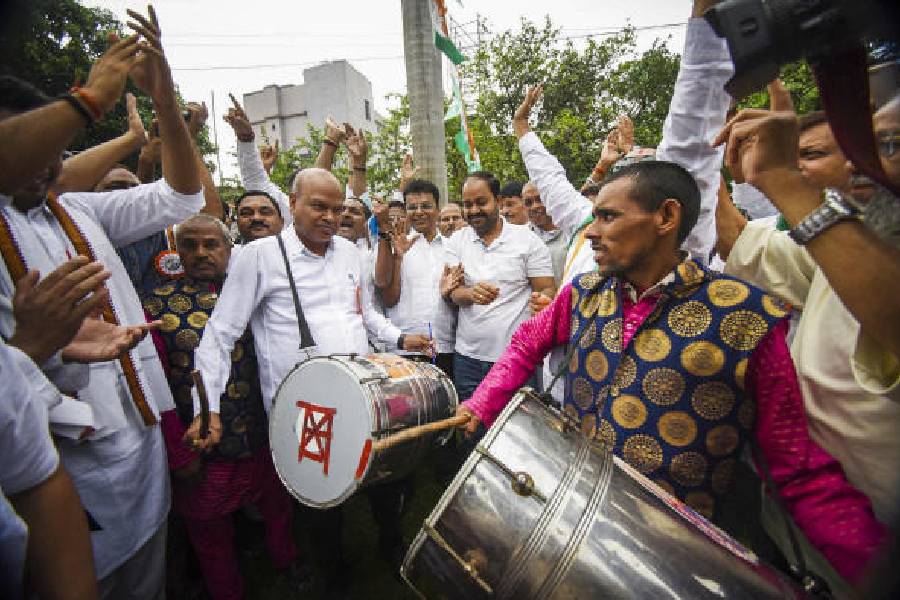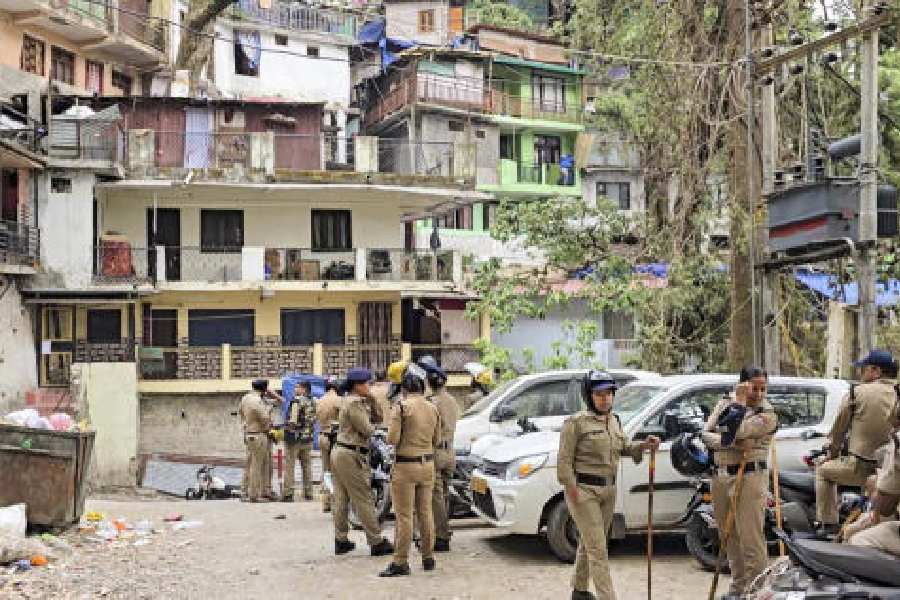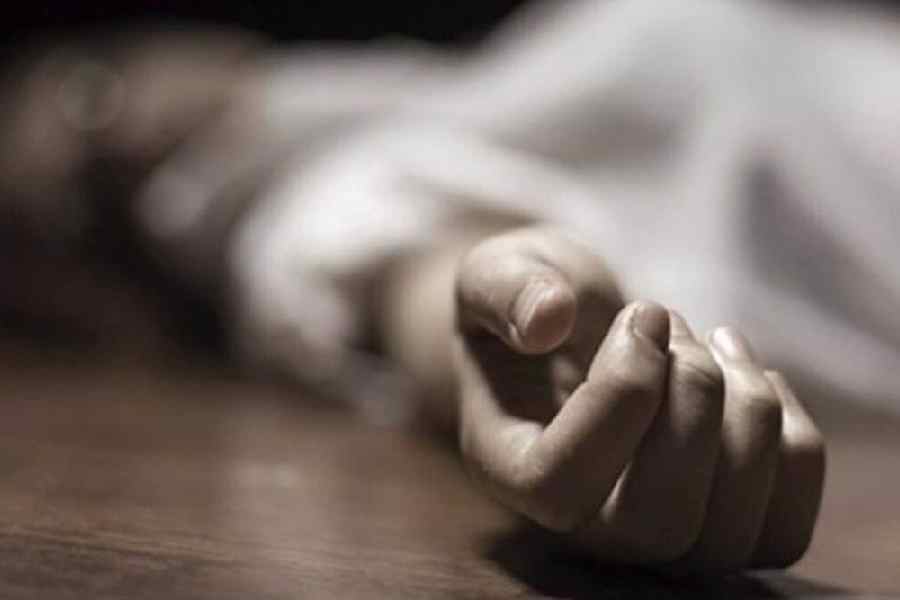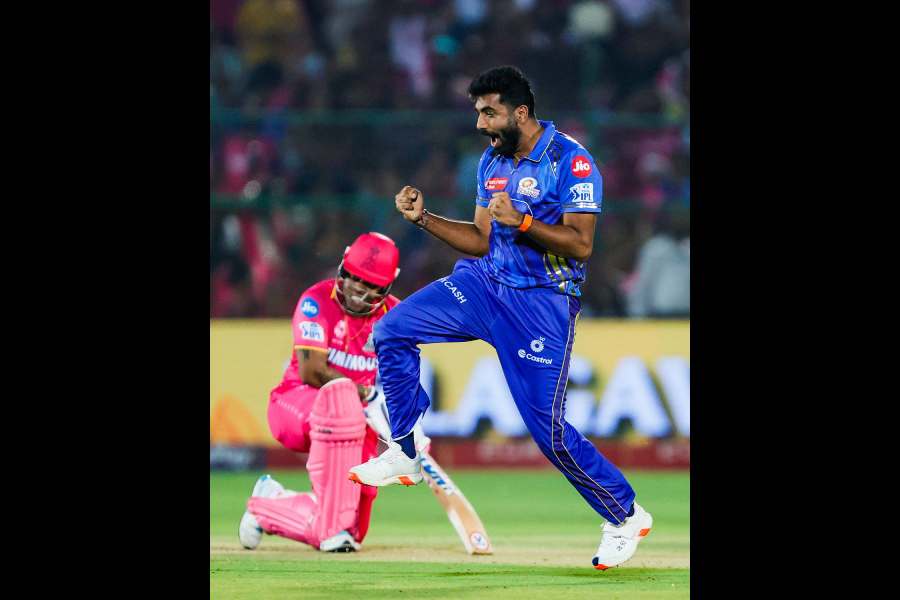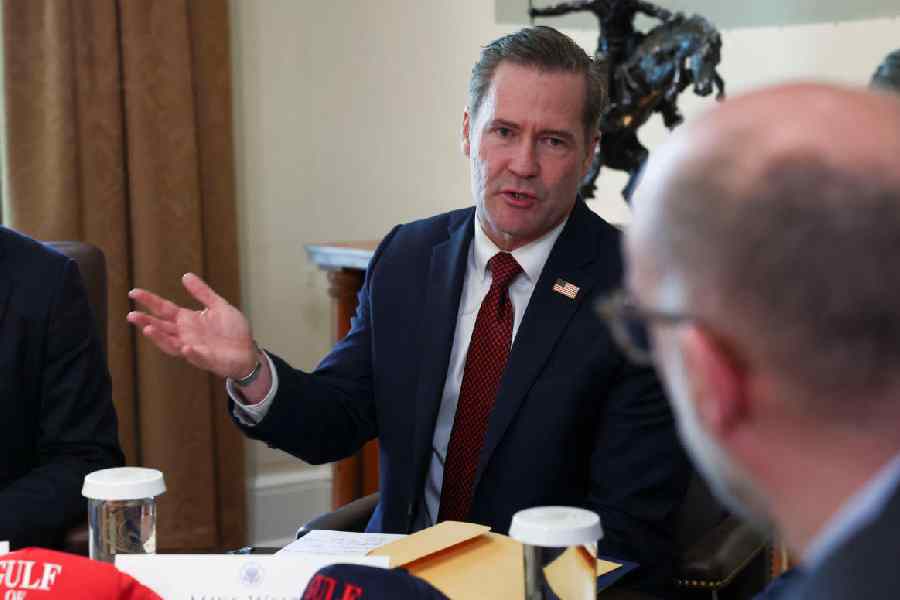 |
| An artisan completes chokkhudaan at Beldih Kalibari in Bistupur on Mahalaya while Bengali community members stage Mahishasurmardini (below) at Durgabati in Ranchi on Tuesday. Pictures by Animesh Sengupta and Hardeep Singh |
When members of the Bengali community staged Mahishasurmardini, the dance drama so famously associated with Mahalaya at Durgabati in Ranchi on Tuesday evening, it marked the beginning of the 132nd edition of the state capital’s first community Puja.
“We still swear by tradition. It is the same ekchala idol for us, and strict adherence to rituals and schedule,” said Durgabati president Jyotirmoy Chaudhury.
And it is because this conventional style touches a chord that devotees throng Durgabati — located at Albert Ekka Chowk, the city’s nerve centre — in large numbers although there is no theme, no idolatrous gimmicks and no innovative artwork to regale contemporary pandal-hoppers.
Tuesday saw a devoted congregation of more than 300 people, both young and old.
Dipannita Mitra, a homemaker from Hindpiri, said she was a regular at Durgabati every year. “Earlier, it was live narration and hence, more appealing. Nowadays, they play records, but the choreography is still commendable,” the woman in her forties said.
 |
Businessman Gour Ghosh, a resident of Upper Bazaar, couldn’t agree more that the dance drama at Durgabati had a charm like none other. “I come here on the occasion of Mahalaya every year. The performance touches the heart,” he echoed Mitra.
Those who cared to go through the memoirs of Durgabati, reproduced in some of its Puja souvenirs over the years, would agree that its history is an integral part of Ranchi’s own antiquity.
The size of the Bengali community in Ranchi was modest in 1883, when Ganga Charan Vedantabagish — then head pundit of Zilla School — mooted the idea of organising Durga Puja and some other eminent citizens supported him.
Subsequently, a committee was formed with Debendra Lal Roy and Roy Saheb Nabakrishna Roy (both of whom have streets named after them) as president and secretary, respectively. The first community Puja of the sleepy town that Ranchi was at that time was held with subscriptions from members, the highest — Rs 51 — coming from the president.
An impressive temple has now replaced the modest structure where the first Puja was held. Judging by the chaotic traffic witnessed at Albert Ekka Chowk these days, it is difficult to believe that a mela was organised there during Durga Puja every year since 1897. The traditional fair was discontinued at a later stage for space crunch.
Jatra or arena theatre was also organised regularly since 1926 and Charankabi Mukunda Das, who was known for his appealing rendition of patriotic songs, had performed in the debut year.
Animal sacrifice was once must on Saptami, Ashtami and Navami tithis, but the practice was done away with from 1927.
Seeing the huge turnout of women at Durgabati today no one would perhaps believe that they once maintained purdah and would come to bow before the goddess only when men vacated the premises for them after 8pm on Navami.
“It was in 1921 that the ladies came out in the open and offered pushpanjali for the first time. A lot may have changed with time, but not Durga aradhana. Our Puja still is and will be performed with the same ritualistic fervour as it was done in the century gone by,” Chaudhury said.





